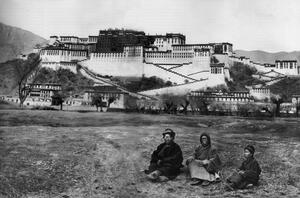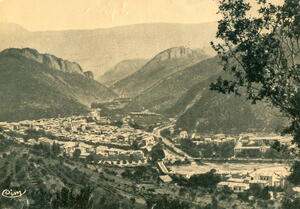The old lady and the Himalayas
On the eve of her 100th birthday, Alexandra David-Néel (1868-1969) sent her secretary to the Préfecture in Digne to have her passport renewed. The old lady missed Tibet, and more than 50 years after her first journey there she planned to go back—even if it meant driving all the way in her small Renault 4CV.
In 1928, she had purchased a house in Digne that she named Samten Dzong, the Fortress of Meditation. This is the place she would briefly come back to and rest between her long journeys to the far reaches of the Himalayas. Why Digne? The mountains around the somnolent little town reminded her of Tibet, where she had lived as a hermit, witnessed prodigies and received the teachings of the high lamas of the kingdom.
How this daughter of a petit bourgeois family became the first western woman to enter Lhasa—the forbidden capital of Tibet—is a most extraordinary story.
Alexandra was a restless child. She would seize any occasion to run away and explore the world around her. At five she was found alone, at nightfall, in Paris Bois de Vincennes; at 15 she ran away to London, where she became acquainted with Buddhist philosophy through the famed Theosophical Society; at 22, a small inheritance enabled her to take a year-and-a-half long trip to Ceylon and India; at 43, she left Europe for good and headed off on a lifetime voyage to Tibet.
The India and Ceylon experience had been a revelation to her: on that far-away continent Alexandra had found a spiritual home, a physical and mystical world that she would relentlessly explore for the following eight decades.
From the early 1900s until 1946, she penetrated deeper and deeper into the mysterious Himalayan kingdoms, sometimes dressed as a beggar or a pilgrim accompanied by a young lama she had adopted, seeking wisdom through study, asceticism and meditation.
Back in Digne, where she settled permanently at 78, she devoted her time to writing. Alexandra David-Néel authored some 25 books narrating her travels, exploring Buddhist philosophy and Tibetan language, and sometimes making incursions into the magic and the occult.
The best part of her literary work, however, is her correspondence with her husband Philippe Néel—a railway engineer she married in 1904 and remained very close to, despite her almost constant absence.
Alexandra's spirit still lingers in Samten Dzong, where most of her sparse belongings have been preserved by her faithful secretary Marie-Madeleine: notebooks, cameras—she was an excellent photographer—photo albums, the small camping table on which she wrote ...
The house is now a museum and Tibetan cultural centre—a small fragment of the High Kingdom at the foot of what Alexandra called the "Lilliputian Himalayas."




